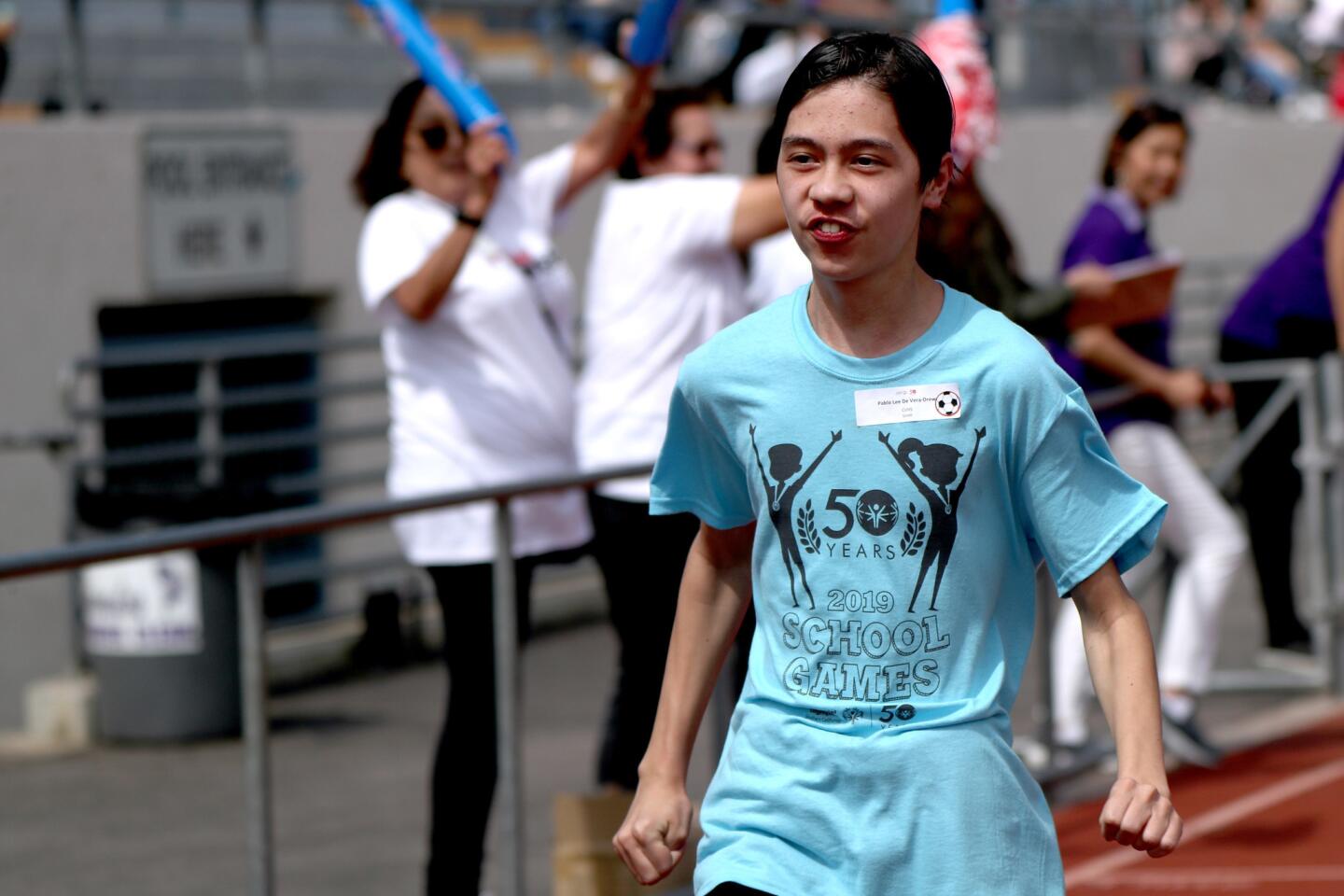At Glendale Unified’s Special Olympics, athletes of all abilities are celebrated
Young athletes assumed their positions behind the starting line for a 50-meter dash at Hoover High School this past Friday.
When Coach David Beard shouted, “On your mark,” they intuitively tensed their posture and determination spread across their faces as the spring sun beat down from above.
Then Beard noticed one of the athlete’s toes was over the line, calling for a false start. The athletes erupted in a chorus of “Oh, man’s” before getting back into position.
It was like any school race — except the athletes in this sports event were special-need students who hailed from local middle and high schools as well as Foothill Area Community Transition Services, or FACTS, a special-needs program serving adults between 18 and 22 years old. Beard is a physical-education specialist with the Glendale Unified School District who is trained to work with cognitively- and physically-impaired youth.
The competition, which also included a long-jump event and javelin and softball tosses, marked Glendale Unified’s third Spring Secondary Special Olympics for developmentally-disabled students, which brought in 200 competitors.
A similar competition for elementary school-aged children, now in its second year, is held at Roosevelt Middle School in the fall.
Glendale Unified “is looking at creating an inclusive culture, where all students have access, and we say ‘all means all’ at whatever ability you’re at,” said Debra Rinder, executive director of the school district’s special education department.
“Really, anything is possible,” Rinder said. “You might have to make some modifications and adjustments, but that’s life. So, having that opportunity for our kids to compete and to be the center, is something I think they’ll never forget.”
Kean Bracht, now 20, started competing in the district’s Special Olympics when he was a student at Crescenta Valley High School. Earlier this month, he took home first place in the 100-meter dash at the Glendale Spring Games, a special-needs competition that drew 350 athletes from several cities.
“I like being with my team. It’s really cool,” Bracht said. “It’s also fun competing against teams from other cities.”
Students from area schools not participating in special-needs education were invited to attend.
Andrea Zakarian, an eight-grader at Toll Middle School, said she and several of her friends came to cheer on fellow classmates.
“It’s a role reversal,” Rinder said. “[We’re] in the stands cheering, and our kids are out here competing.”
At this particular event, races aren’t timed and the distances that balls and javelins are thrown aren’t recorded, but competitors are given ribbons designating where they placed in each contest.
“It’s more about the participation than anything else,” said Kim Villa, a volunteer organizer who previously worked professionally for local and international special-needs competitions before retiring.
According to Villa, parents of some of the competitors aren’t aware that their children are able to participate in sports. It’s often the district’s specially-trained coaches who teach them the nuts and bolts of the activities, including where to stand at the beginning of a race and how to stay in their lanes.
When parents and families get involved — driving their kids to competitions and watching them from the sidelines — they often meet other participants’ parents and families.
“They kind of become a support group for each other. They mentor each other and help each other through the process” of transitioning their children out of school and into the next phases of their lives, Villa said.
One goal of the district’s now annual competition is to encourage young people to participate in extracurricular community sports programs designed for special-needs individuals.
Those programs include teams that practice regularly and compete year round — and do not have an upper age limit.
“We get them involved before they get out of school, and we lose them,” Villa said. “Then, they can stay involved for a lifetime.”
Twitter: @lila_seidman










